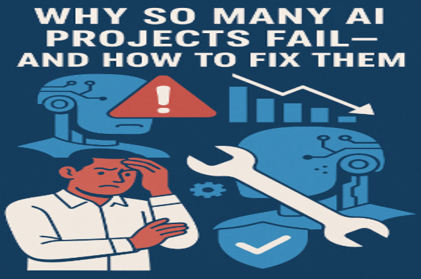Even with generative AI capturing headlines and boardroom attention, recent research suggests a sobering reality: most bespoke AI pilots aren’t delivering. According to a 2024 MIT study, 95 % of custom generative-AI projects never make it to production, and many executives remain wary. Their concerns—data leakage, unreliable outputs and clunky workflows—are eroding confidence in home-grown solutions and pushing organizations toward off-the-shelf AI tools.
Data Leakage: The Hidden Risk
Modern AI models thrive on data. They’ve already been trained on massive public and proprietary datasets—sometimes obtained without explicit permission. When companies feed internal documents into a generative model, the algorithm can infer connections the team never intended to share. In the intelligence community, combining multiple unclassified pieces of information can inadvertently create a classified report. A similar phenomenon occurs with AI: even if you only provide a portion of your R&D files, the model may reconstruct strategic plans or technical secrets based on its previous training. Unless your tools run in a truly isolated environment, those insights can be exposed—either through the service provider or via employees using unauthorized “shadow” AI apps on their personal devices.
Hallucinations and “Data Drift”
Generative models have improved enormously, yet they still hallucinate—producing plausible but false information. In creative writing or art, hallucinations can inspire new ideas. In business, they undermine trust. Worse, models are updated continuously. Version 4.1 of ChatGPT may return different answers tomorrow, due to shifts in its training data or prompt-alignment tweaks (so-called “data drift”). Without visibility into a model’s weights or update schedule, companies have little recourse if the AI starts inserting inaccuracies into reports, legal drafts or financial summaries.
Misaligned Workflows and the Limits of Off-the-Shelf AI
Most firms adopting generative AI rely on commercial platforms, adding their own data or fine-tuning to handle industry-specific tasks. This approach can work for text-heavy fields—law, research, HR or contract drafting—but it often fails when precise calculations are required. Large language models excel at predicting the next word; they aren’t guaranteed to perform reliable computations or extract perfect numbers from complex spreadsheets. One corporate client wanted AI to draft contracts and embed accurate financials. The model generated elegant prose but repeatedly miscalculated key figures, exposing the business to risk.
All of this underscores a broader truth: AI is not a simple software tool you can set and forget. Its strengths and weaknesses are deeply tied to the data it ingests, the tasks you ask of it and the protections you put in place.
Taking Back Control
The headlines about AI missteps shouldn’t stop your organization from innovating. Instead, they highlight the need for robust governance. At ZeroTrusted.ai, we’ve built a suite of solutions to address data leakage, hallucinations, model drift and shadow AI. Our platform lets you monitor who is using AI, what data they share and how the models respond—giving you insight into where future AI projects can succeed and how to keep sensitive information secure. If you want AI to accelerate your business instead of derail it, it’s time to balance experimentation with control.






Comments